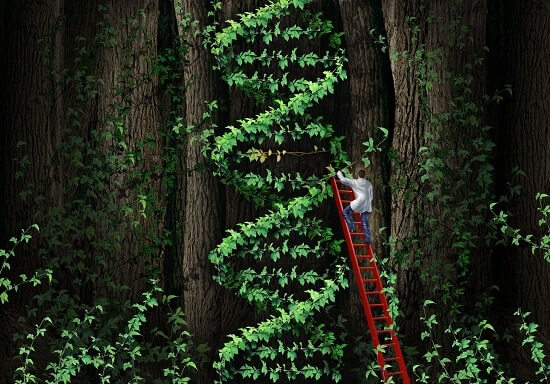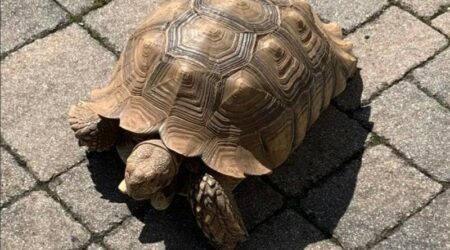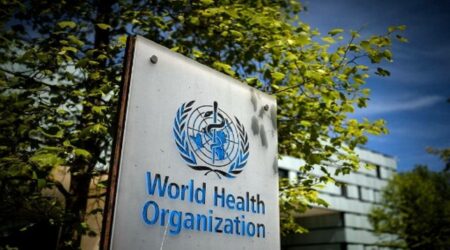When we hear that something is genetic, we have learned it means that DNA is handed down to us from our parents and their parents to them and their parents to them. We are genetically linked to our ancestors through magical molecules that preserve information about our lineage. For example, we learn from cancer experts that breast cancer, colon, ovarian and pancreatic cancers may be hereditary.
In biochemical terms, DNA is an acid that stubbornly holds blueprints on how we produce interacting proteins enzymes, and hormones for our body’s functions, along with tendencies to be built chemically in particular prescribed ways. DNA also allows a certain amount of variation that works; if it does not work, it is eliminated. Humans generally have most of these proteins in common, which is how modern medicine generalizes about proteins, the DNA that built them, and diseases.
When unpredictable changes happen they are called mutations. Sometimes it is due to misreading from blueprint to replication. Sometimes it is due to exposure to a chemical in the environment or physical force such as radiation. Sometimes it is due to a strong chemical such as a pharmaceutic drug that inserts a building block where it was not intended. Some metals can also go into the crevices of the DNA and cause changes, both positive and fortifying such as zinc, or negative such as cadmium. All factors that mutate the DNA are called mutagens, and if they cause cancer, they are called carcinogens.
All changes that happen after the basic blueprint has formed are called epigenetic, epi- meaning beyond the basic. The idea of epigenetic influences is most useful for self-motivated people because epigenetic theory allows us to hope for change with effort. We are not destined to fatefully suffer from our genetic lottery. Especially if there is a disease in several members of the family, epigenetics gives hope that we might surpass the usual outcome.
If we exercise properly, we can change the way our muscles use energy and prevent calcium or fat from building up in our vessels. We might change our entire physique and the strength we hold in our organs; it might give us more brown fat than white fat in our storage spaces to insulate us from toxins depositing into our bodies. With lifestyle changes, we can strengthen our heart and our bones, and make our brain more fortified to work with our mind’s needs. Our hormones and proteins produced by the DNA are thus altered.
Ayurveda whispers that ancient traditions gave us the tools of exercise, diet, and lifestyle, known as ahara-vihara, in order to optimize our epigenetics but also gave us details that are amazingly accurate. Ayurveda advises you to push your exercise routine to your full effort in the visarga kaala, especially between the middle of September and the middle of January. But when adana kaala starts and the days begin to lengthen, we should work to only 50% of our capability. The longer days shift the genetic code expression and the body begins to conserve oils in preparation for the heat of adaana kaala.
As the rays of the sun get hotter, and as the days get longer, Ayurveda advises us that the sun is not giving (daana) but rather taking (adaana) away from our moisture in our deepest tissues, so we should be careful not to lose our healthiest unctuous nature. Foods that replenish this deep moisture and biological oils are to be used before the depletion cycle begins. This is one reason sesame is encouraged in the diet during December and January.
Ayurveda tells us to create a routine by taking a morning walk and/or an evening walk to soak in the sun’s orange and red rays at sunrise and sunset. It resets our clock genes and gets the factory of proteins being produced in a more coordinated way. It is easier than a gym workout, cheaper, faster. It is kind to the overweight body.
Yoga on the mat or asana is not only exercise but a test of coordination and connection between mind and body. Exercise in nature is always optimal, as the breath is replenished with fresh oxygen from the trees and natural wind. Team sports or hiking are great ways to move the body, but only to 50% of your effort between February and July. If you love to dance, it is a great option for strengthening the thighs; the thighs are the most important part of the extremities for health due to their strength and the large blood supply.
The nuances of proper exercise for each season and in alignment with the doshas in the environment vs. in the body helped people understand the optimal exertion to build muscles and lose extra fat. Those who can integrate Ayurvedic vyayam prescriptions lose weight gradually, permanently, and gain strength, flexibility, and confidence while accessing their epigenetic potential.











